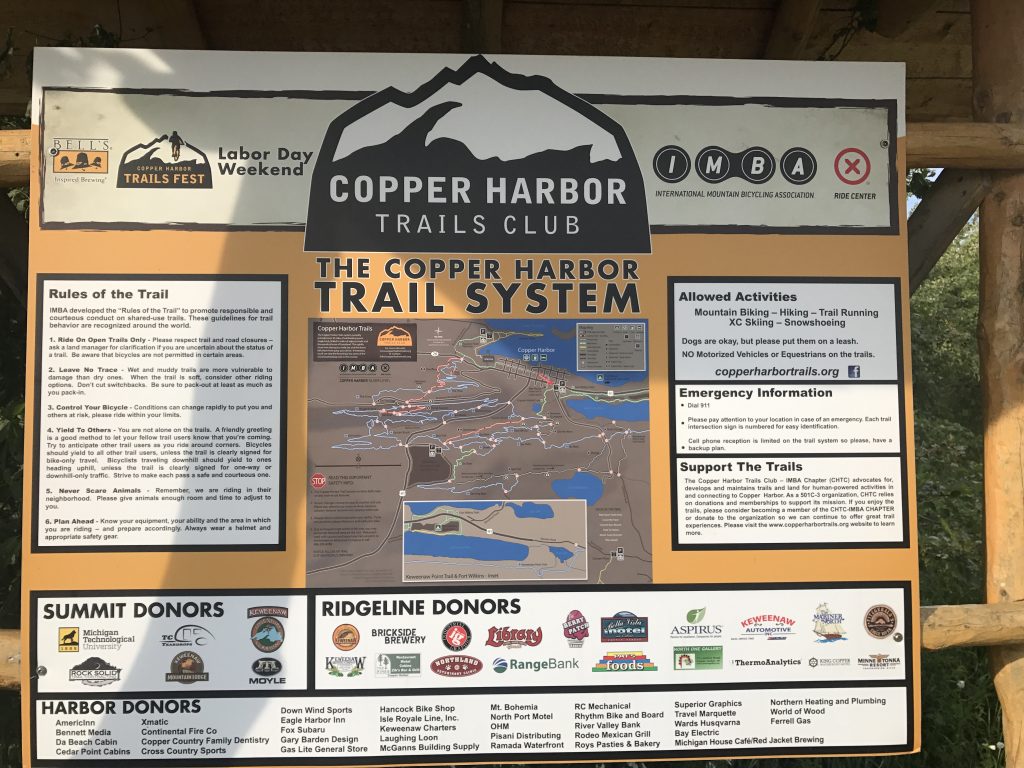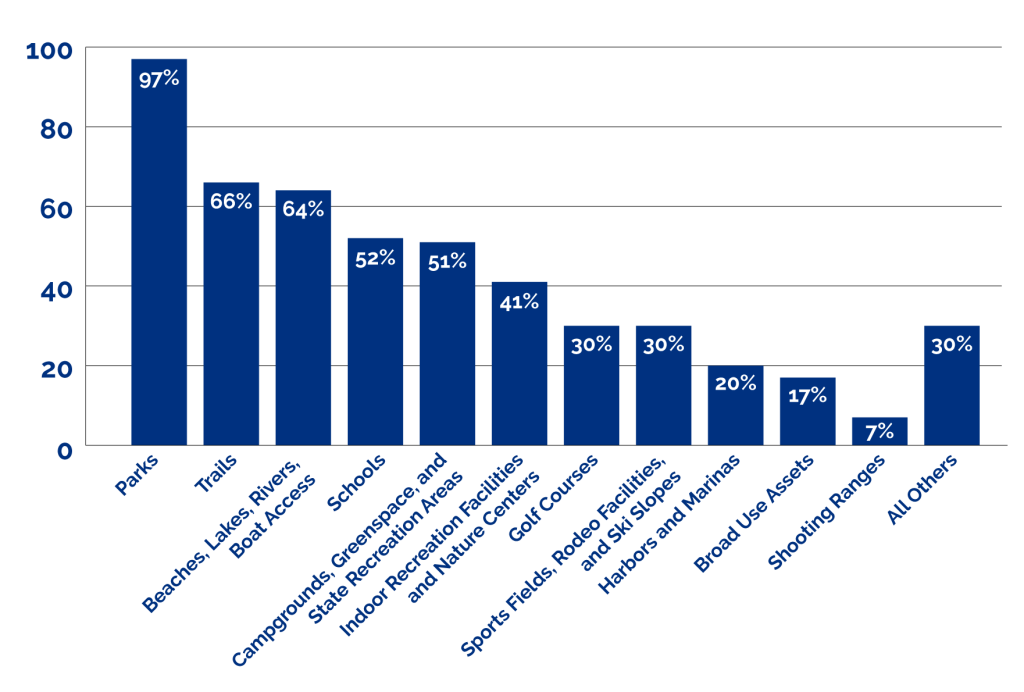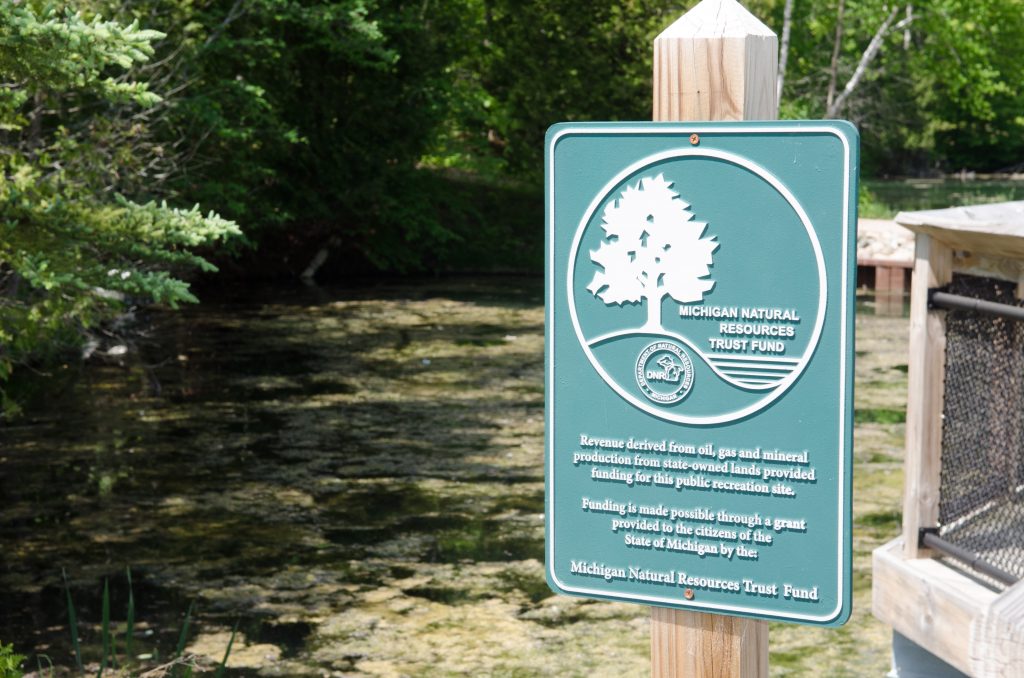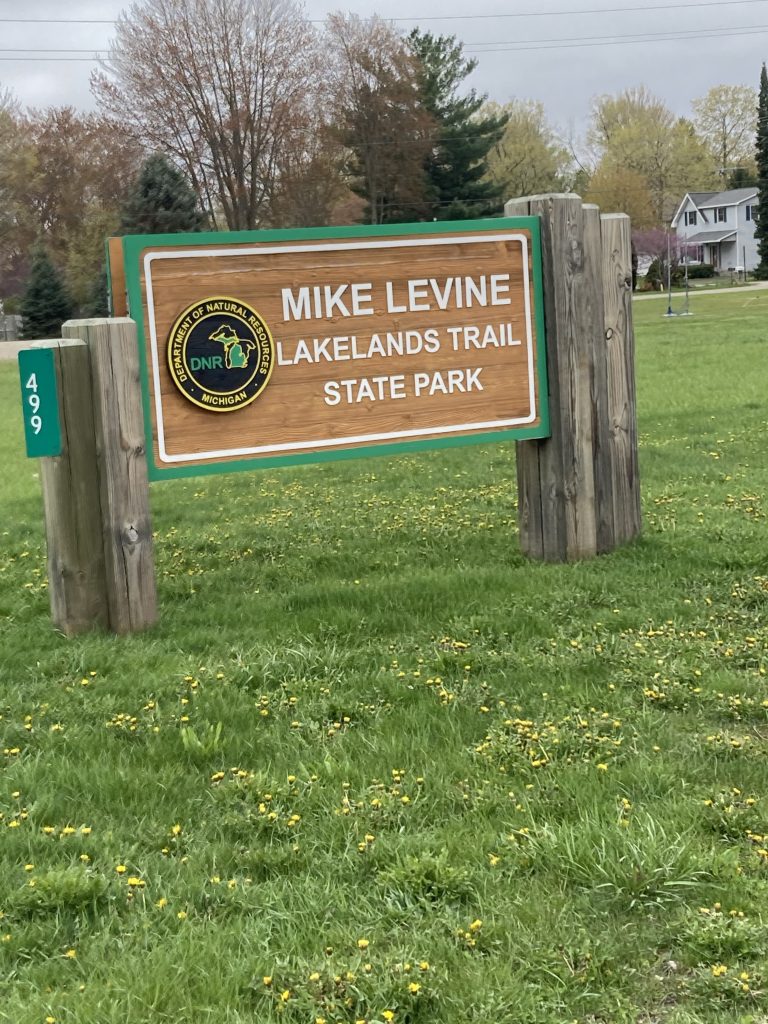8 The Trail Building Process in Michigan Part 2—Funding Options and Long-Term Maintenance
“Michigan’s funding opportunities for trails [primarily] come from user fees, state gas tax, and grant opportunities. At both the state and federal levels, the funding for trails provides a solid foundation for the maintenance and improvement of trails, however, these funding opportunities are not sufficient or sustainable over time. The state is in process of completing a comprehensive review of trails and the funding needed to maintain the trails in perpetuity.”
—Tim Novak, State Trails Coordinator, Michigan Department of Natural Resources (DNR)
Chapter Objectives and Goals
Michigan has emerged as the nation’s leading trail state due in part to the availability of state administered funding options. Readers of this chapter will come to appreciate these significant funding opportunities, as well as the important role that funding plays in the construction, management, and long-term maintenance of trails.
Key Questions to Consider as You Read this Chapter
- At what levels of government are funding programs available for trail building?
- Describe some of the sources of trail funding available at the federal level. How do those programs include work with state agencies?
- What are some of the funding sources for those federal programs and how do they relate to sustainability?
- What is the distinction between a user fee and a local tax to support trails?
- What obligations does a local unit of government have to raise local funds to seek federal funding?
- What is a grant, and how is it different from a gift?
- Identify at least one state-level philanthropic organization that supports trails in Michigan.
- Why is maintenance such an important component of a comprehensive trail plan?
- What are some challenges that trail managers face with the long-term sustainability of a trail?
- Describe the options available for a trail manager to provide for physical maintenance of trails.
Introduction
Funding is a foundational element in the trail building process, and one component that is often elusive for trail managers. Part of the dilemma with funding is that many trail managers are not aware of the significant number of funding opportunities that exist in both the public and the private sectors in Michigan. Fundraising should begin early in the life of a trail and continue throughout the long-term management of the trail. Proper planning and funding to support the management and maintenance of a trail is critical to its long-term success.
Trail Funding
Many funding options exist for trail managers in Michigan. State and federal grants, local millages, philanthropic organizations, gifts and private donations, business and corporate partnerships, and novel funding sources like donation canisters provide a range of opportunities for trail funding.

Grants
One of the most popular sources of funding for trail managers in Michigan is grants. A grant is a conditional conveyance of dollars from either a government or philanthropic organization. The first step in securing a grant comes in the form of a multi-tiered application that is submitted to the funding organization (i.e., “the grantor”). Grants typically involve conditions that must be met by the recipient (i.e., “the grantee”) and if those conditions are not met, there’s a potential for the grantor to modify the grant or even revoke the grant entirely. For these reasons, grant writing and grant compliance are important skills that trail managers should possess. The remainder of this section provides an overview of some of the most prominent grant programs that have funded trails in Michigan.
Federal Grants
One of the main sources of grant funding for trails is the federal government. These funds are typically derived from taxes and fees collected at the federal level. Applicants are responsible for meeting legal requirements and documenting the process for the use of the funds. Federal funds for projects must be compliant with relevant federal law. For example, many federal grant programs require projects to be compliant with the National Environmental Policy Act (NEPA), which requires federal agencies to examine the environmental impact of certain federally funded projects.
Recreational Trails Program
The Recreational Trails Program (RTP) is a principal source of federal grants for trail development and management. These funds come from the federal Highway Trust Fund, which collects approximately $270 million per year in non-highway recreational fuel excise taxes, paid by off-highway vehicle (OHV) users (e.g., snowmobiles and all-terrain vehicles). The RTP provides funding to states to “develop and maintain recreational trails and trail-related facilities for both nonmotorized and motorized trail uses” (RTP Database n.d.b).
Of the total RTP funds available, 40 percent is set aside for diverse recreational trail use, 30 percent is set aside for motorized trails, and the remaining 30 percent is dedicated to nonmotorized trails. RTP funds are allocated directly to the states and are generally administered through a specific state regulatory agency (in Michigan’s case, the DNR) (RTP Database n.d.a). In fiscal year 2020, Michigan received $2.825 million in federal RTP funding (FHWA 2021). Michigan trails such as the Musketawa Trail, the Ocqueoc Falls Pathway, and the Paint Creek Trail have all received funding from the RTP.
Land and Water Conservation Fund
The federal Land and Water Conservation Fund (LWCF) is another source of federal funding for trails. The LWCF invests earnings from offshore oil and gas leasing to “help strengthen communities, preserve our history, and protect our national endowment of lands” (National Park Service 2022). The United States Congress created this funding program based on the rationale that the government is using the revenues from the depletion of one natural resource (oil and gas) to conserve a different natural resource. The LWCF provides matching grants to state and local governments for the development of public outdoor recreation areas and facilities. For a state to receive funding from the LWCF it must have in place a current Statewide Comprehensive Outdoor Recreation Plan (SCORP).
The LWCF has supported nearly one thousand trail projects, and thousands of other projects like community parks and recreational fields in all fifty states. Like the RTP, this fund is administered through a state agency (in Michigan, the DNR). Examples of trail projects that have received LWCF dollars in Michigan include trails in the Sleeping Bear Dunes National Lakeshore, the Brighton State Recreation Area, and Lake Lansing Parks.
Transportation Alternatives Program
The federal Transportation Alternatives Program (TAP) is a competitive grant program that uses federal transportation funds designated by Congress for “specific activities that enhance intermodal transportation system and provide safe alternative transportation options” (MDOT n.d.b). Eligible applicants include county road commissions, cities, villages, regional transportation/transit agencies, state and federal natural resource agencies, public land agencies, and tribal governments. The program is focused on supporting projects that provide “transportation alternatives” like pedestrian and bicycle facilities and recreational trail projects. The Safe Routes to School (SRTS) program, which helps promote safe opportunities for travel to and from schools, is an important trail-related program that is funded by TAP dollars. The Michigan TAP program is administered by the MDOT and requires documentation of public input, a minimum match of 20 percent of the construction cost, and compliance with federal trail design standards. In 2023, the TAP funded 41.4 miles (total funding of $24.5 million) of trail development in Michigan, including portions of the Pere Marquette Rail Trail and the Detroit Riverwalk (MDOT n.d.a).
State Grants
State government grants for trail work in Michigan are available through several sources such as the Michigan Natural Resources Trust Fund (MNRTF) Grant Program, the Recreation Passport Grant Program, and various user fee-based grant programs available for motorized trail uses. These grants are generally available to local units of government that have a DNR-approved Five-Year Recreation Plan. Having this master plan in place helps establish consistency across recreation management agencies and demonstrates that the grant itself will fit into broader community plans. This requirement illustrates the important role that a coordinated land use plan plays in trail development. According to data compiled by the DNR, sixty-six percent of Five-Year Master Plans list trails as an outdoor recreation asset (Exhibit 1).
Exhibit 1. Percentage of Five-Year Master Plans that Include Lists of Outdoor Recreation Assets

Michigan Natural Resources Trust Fund (MNRTF)
One of most significant sources of state funding for trails is the Michigan Natural Resources Trust Fund (MNRTF). This fund derives its income from royalties that the state collects from the sale and leasing of state-owned mineral rights. The principle behind the creation of this fund is similar to that of the federal LWCF in that the state is using revenue from a non-renewable natural resource to support another natural resource. The DNR and the MNRFT Board, a state-level administrative board consisting of citizens from around the state, reviews grant applications for the use of the fund and makes recommendations to the Michigan legislature for final review and approval of the use of the fund.
The MNRTF is established in the Michigan Constitution and further detailed in Michigan statute. By law, no less than 25 percent of the MNRTF revenues available for appropriation each year can be used for development of public recreation facilities and no less than 25 percent can be used for the acquisition of public land. Applicants for this program are required to provide 25% matching funds and applications are scored higher based on the percentage of the match. Historically, there has been approximately $15-$20 million available for MNRTF grants each year. Some trail projects in Michigan that have been funded by the MNRTF include the Betsie Valley Trail, the Lansing River Trail, and significant segments of the Iron Belle Trail (DNR n.d.a).

Recreation Passport Grant Program (RPGP)
Also available at the state level is the Recreation Passport Grant Program (RPGP). The Recreation Passport program is funded by revenue collected from a voluntary fee paid as part of vehicle registration. As of June 2024, the annual fee to purchase a recreation passport was $14 for residents and $40 for non-residents (DNR n.d.c). Recreation Passport grants are made available to hundreds of state-managed parks and recreation areas. In addition to funding specific state park projects, the RPGP is also available to local units of government for the development of public recreation facilities, which includes both development of new facilities and renovation of existing facilities. Applicants for this program are required to provide 25% matching funds and applications are scored higher based on the percentage of the match. $1.98 million was available and awarded to local governments in fiscal year 2023 (DNR n.d.d).
User Fees
In addition to grant programs, the state also has several user fee-based programs that provide funding for specific uses on trails. Both Michigan’s snowmobile and off-road vehicle (ORV) programs are largely supported by registration fees paid by individual users. The ORV Trail Improvement Fund provides funding for the maintenance and development of ORV trails and facilities and the Snowmobile Trail Improvement Fund provides funding to maintain snowmobile trails as part of the designated statewide trail system (DNR n.d.b and DNR n.d.e).
Michigan currently does not have a dedicated fee program to support nonmotorized trails. Unlike the motorized trail programs that are funded by registration and permit fees, there is no similar requirement for non-motorized trail use. Several attempts have been made at drafting a voluntary user fee program, but difficulties remain in terms of registering users and enforcing the use of a trail fee and registration system. This absence of dedicated funding for nonmotorized trails should be addressed in order to provide greater funding equity across Michigan’s trail system.
Millages
As trails become more popular at the local level, trail managers should consider the opportunity for local units of government to collect a dedicated portion of local property taxes (millages) for specific trail uses within that jurisdiction. Any local millage must be voted on and approved by the residents within that community. An example of a local trail millage is the Ingham County Trails and Parks Millage, which has been successful in supporting an expanded trail system across the county (Ingham County Parks n.d.). Because trails are frequently so important and popular at the local level, local millages are a great way to support trails within a community.
Philanthropic Organizations
There are numerous foundations and philanthropic organizations that have generously supported trail development and maintenance in Michigan. These organizations generally utilize donated assets and income to provide specific funding programs to qualifying projects. Some of the key philanthropic organizations that have a presence in Michigan include the Ralph C. Wilson, Jr. Foundation, the Meijer Foundation, the Americana Foundation, and the Michigan Trails and Greenways Alliance. One of the particularly active foundations in southeast Michigan is the Ralph C. Wilson, Jr. Foundation, which has a unique trust that requires $1.4 billion to be spent down by the year 2035 with a specific funding priority on creating parks, trails, and green design projects (Ralph C. Wilson, Jr. Foundation n.d.).
Gifts and Private Donations
Michigan has several significant individual trail supporters that have funded trail projects over the years. Because people often feel a direct connection with supporting a trail that encourages community engagement and investment, individual gifts and donations are an important part of a trail funding plan. An example of this funding source is the significant financial and personal support made by former Pinckney resident, Mike Levine, for building the Great Lake-to-Lake Trail that runs between South Haven and Port Huron. Mr. Levine personally committed millions of dollars to trail development in Michigan. Finding and working with these local donors can provide considerable financial support for trails.

Business and Corporate Partnerships
Other financial support can come from business and corporate partnerships. Building partnerships is essential for sustainability of any trail system, and many business partners will support trails as an evident investment in both people and the community. Businesses can also provide in-kind services that a trail manager may need to help construct and maintain a trail. Utility companies such as Consumers Energy and DTE Energy have allowed the use of utility corridors to facilitate the development or expansion of trails in Michigan. Utility companies are an important resource because they can allow for trails to be built in areas where there is an existing cleared corridor.
Novel Funding Sources
Other less common sources of funding include user fees (e.g., bridle tag or a bicycle fee), donation canisters placed at trailhead collection sites, local bond issues, and trail events that can generate registration fees directly for the use on a trail. Finally, there are a number of web-based crowdfunding programs that should also be considered as part of a comprehensive fundraising plan.
Trail Maintenance
Trail planners often underestimate the importance of incorporating both short-term and long-term maintenance efforts into a trail plan, concluding that a well-built trail can minimize maintenance efforts. However, it would be a mistake to not fully consider experiences of other trail planners, and the likelihood that increased uses of trails and changing weather patterns, along with other variables, can have a dramatic impact on the ability to sustain a trail. For these reasons, a robust trail maintenance plan should be a key component of any trail management strategy.
The proper maintenance of a trail helps provide for a pleasant and safe recreational experience for trail users and helps reduce both repair costs and liability exposure for trail managers and their organizations. With changing climate and other environmental conditions, there are a host of potential threats to trail infrastructure like flood control, new, more aggressive forms of trail use, and even potential exposure to historical contaminants along the trail. When looking forward at the long-term future of a trail, trail planners must anticipate the needs to maintain the integrity of the trail given changing and potentially unknown conditions.

Addressing trail maintenance needs is made a bit more complex by the fact that there are generally not as many funding sources available for maintenance as there are for the actual construction of a trail. Michigan’s trail funding programs cannot generally be used to cover short-term maintenance costs. Longer-term and more substantial maintenance efforts such as replacing a boardwalk or a bridge are more likely to be funded by state grant programs. Given these concerns with funding needs, it is not surprising to note that many state recreation infrastructure components lack direct support for maintenance work. Many state park recreational facilities are in need of upgrade and replacement due in large part to lack of funding for maintenance.
Maintenance plans should cover both short-term and long-term maintenance needs. Funds must be in place to react quickly to repairs that trail users and trail managers may have identified on the trail. For example, a fallen tree crossing a trail route that prevents passage or poses other safety issues should be removed promptly and any damage repaired. Longer-term maintenance efforts should be proactive rather than reactive, so that regular upgrades to trail facilities, including the trail surface, signage, and amenities, are accomplished on a planned time frame.
A regular or routine trail maintenance schedule should be in place to clear vegetation within the trail corridor and maintain existing signs and other amenities. In addition, routine maintenance should also address surface related issues, such as filling or sealing cracks, and addressing grading and patching issues. Maintenance of bridges, culverts, and drainage features and the infrastructure located at trailheads should also be part of a regular maintenance effort.
There are several options available to implement a trail maintenance plan and they include a relying on trail management staff, trail maintenance organizations that specialize in trail maintenance, and partnering with volunteer groups and organizations such as trail friend groups. Public-private partnerships are often formed with a memorandum of understanding (MOU) serving as a foundation for shared responsibility for maintenance efforts.
Regardless of what approach is taken, it is vital to not underestimate the importance of having a thorough maintenance plan, including adequate funding to support those maintenance efforts. Ideally, at the inception of a trail, the plan should include a thorough review and recommendations for maintenance. A trail plan without a maintenance component faces a difficult path ahead.

Group Discussion Topics
What are the key differences between short-term and long-term trail maintenance activities? Please give an example of each. Why is it important for trail planners and managers to consider both short-term and long-term maintenance when estimating funding needs for a trail? As we look to the future for trail building, many believe that we should be focusing more on the development and maintenance of natural surface trails. What advantages and disadvantages do you see with natural surface trails?
References
Federal Highway Administration (FHWA). 2021. 2021 Recreational Trails Program Annual Report. Washington, D.C.: FHWA. Accessed June 27, 2024. https://www.fhwa.dot.gov/environment/recreational_trails/overview/report/2021/
Ingham County Parks. n.d. “Trails and Parks Millage.” Ingham County Parks. Accessed June 28, 2024. https://pk.ingham.org/trails_and_parks_millage/index.php
Michigan Department of Natural Resources (DNR). 2018. Michigan Statewide Comprehensive Outdoor Recreation Plan: 2018-2022. Lansing: DNR. Accessed June 28, 2024. https://www.michigan.gov/-/media/Project/Websites/dnr/Documents/PRD/Mgt/SCORP2018-2022_Final2.pdf?rev=84364b127fdb4c01af133703077176ef
———. n.d.a. “Natural Resources Trust Fund.” Michigan.gov. Accessed June 28, 2024. https://www.michigan.gov/dnr/buy-and-apply/grants/rec/mnrtf
———. n.d.b. “ORV Trail Improvement Fund.” Michigan.gov. Accessed June 28, 2024. https://www.michigan.gov/dnr/buy-and-apply/grants/rec/orv-trails
———. n.d.c. “Recreation Passport.” Michigan.gov. Accessed June 28, 2024. https://www.michigan.gov/dnr/buy-and-apply/rec-pp
———. n.d.d. “Recreation Passport Grants.” Michigan.gov. Accessed June 28, 2024. https://www.michigan.gov/dnr/buy-and-apply/grants/rec/rec-pp
———. n.d.e. “Snowmobile Trail Improvement Fund.” Michigan.gov. Accessed June 28, 2024. https://www.michigan.gov/dnr/buy-and-apply/grants/rec/snowmo-trails
Michigan Department of Transportation (MDOT). n.d.a. “Michigan Transportation Alternatives Program (TAP) 2023 Accomplishments.” Michigan.gov. Accessed June 28, 2024. https://www.michigan.gov/mdot/-/media/Project/Websites/MDOT/Programs/Grant-Programs/TAP/2023-TAP-Accomplishments.pdf?rev=ac6cdd84c46d472e9d712530ed4987df&hash=5430BE3269D43E8F38F8D917617D7CC4
———. n.d.b. “Transportation Alternatives Program (TAP).” Michigan.gov. Accessed June 28, 2024. https://www.michigan.gov/mdot/programs/grant-programs/transportation-alternatives
National Park Service. December 15, 2022. “Land and Water Conservation Fund.” nps.gov. Accessed June 27, 2024. https://www.nps.gov/subjects/lwcf/index.htm
Ralph C. Wilson, Jr. Foundation. n.d. “Parks, Trails & Green Design.” Ralph C. Wilson, Jr. Foundation. Accessed June 28, 2024. https://www.ralphcwilsonjrfoundation.org/our-focus/active-lifestyles/parks-trails-and-green-design/
Recreational Trails Program (RTP) Database. n.d.a. “About.” RTP Database. Accessed June 27, 2024. https://recreationaltrailsinfo.org/about/
———. n.d.b “Home.” RTP Database. Accessed June 27, 2024. https://recreationaltrailsinfo.org/

